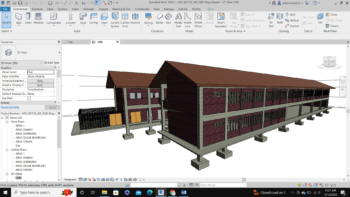There are several challenges that organizations may face when implementing Building Information Modeling (BIM). Some of these challenges include:
Resistance to change: BIM requires a significant shift in the way that design and construction processes are carried out, and this can be difficult for some individuals to accept. There may be resistance to adopting new technologies and processes, which can slow down the implementation process.
Lack of training and expertise: BIM requires a certain level of technical expertise, and not all individuals in an organization may have the necessary skills or knowledge to effectively use BIM tools. This can lead to a lack of understanding and adoption of BIM practices.
Limited resources: Implementing BIM can be a resource-intensive process, and organizations may not have the necessary resources, such as funding or personnel, to fully implement BIM.
Complexity of BIM processes: BIM can be a complex process, with many different tools and processes involved. This can be overwhelming for individuals who are new to BIM and may lead to difficulties in understanding and implementing BIM practices.
Integration with existing systems: BIM requires the integration of many different systems and processes, and this can be challenging for organizations that already have established processes in place. It may be difficult to integrate BIM with existing systems and processes, which can slow down the implementation process.
Collaboration and communication: BIM requires close collaboration and communication between different stakeholders, including architects, engineers, contractors, and owners. Ensuring that all stakeholders are on the same page and have the necessary tools and resources can be challenging, especially when working with large teams or across multiple locations.
Legal and contractual issues: BIM can raise legal and contractual issues, such as liability, intellectual property, and confidentiality. Organizations may need to address these issues before implementing BIM.
Overall, implementing BIM requires careful planning, resources, and commitment from all stakeholders. It is important for organizations to carefully consider the challenges and address them in order to successfully implement BIM practices.




